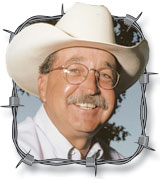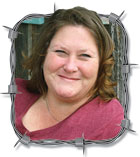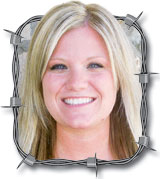The hay baler I presently own is a little over 2 years old and I’ve just started my third season with it. I can still remember the day it was delivered and since I had never owned this brand of baler before, the salesman spent the entire afternoon with me to explain all the operational differences between it and the one I had burned up the year before.
As he helped me set up the new rig, I thought it was some kind of joke when I opened the storage compartment for the net wrap and discovered a bottle of baby powder hanging from the lid. “What’s this?” I asked with a grin, halfway expecting him to explain that it was some sort of an Ozark version of a dry chemical fire extinguisher to prevent catching this one on fire as well.
The knowledgeable sales rep proceeded to explain that the rubber roller that feeds the net wrap had a surface that was “a little sticky,” and needed the baby powder applied in order to make it work properly. He was absolutely correct, because it worked perfectly that afternoon and has performed flawlessly ever since – as long as I don’t forget to use the baby powder at the beginning of every use. Once, during the second hay season, I decided that since I had used it the day before, there was no need to powder the roller. The first bale of the day was ejected without any net wrap and when I opened the door to the storage area, I found exactly one bale’s worth of plastic neatly wrapped around the rubber roller. I extracted the wrap, powdered the roller and proceeded to bale the rest of the day without incident.
Last week, I again made a bad decision by telling myself that a baler that had been used pretty heavily the last two hay seasons was certainly broken-in enough to dispense with the use of baby powder. I was wrong, for the first bale’s wrap, once again, wrapped around the rubber roller. I followed the same procedure of unwinding and applying baby powder and baled the first field perfectly.
Now it certainly isn’t much of an inconvenience (the process takes less than a minute) to apply baby powder, and its cost is pretty insignificant, but I couldn’t help but wonder as I went around and around the hayfield, WHO came up with this idea?
Having taken more than a course or two in agricultural engineering while in college, I could envision a dozen highly trained engineers sitting around a table discussing and evaluating a potential problem with their newly designed, $28,000 hay baler. I’m sure they thought they had the surface texture of the rubber roller exactly correct, if they could just figure out how to prevent it from wrapping the netting around the roller. I’ll bet they tried to solve the problem in a myriad of ways – from plastic guards adjusted microscopically close to the roller, to electronically controlled metal fingers to grab the wrap and send it on down the chamber. They probably experimented with a score of different types and sizes of rubber rollers in an attempt to eliminate the stickiness while maintaining the grip. I would venture to guess that the engineers in charge of design spent hundreds of man-hours and tens of thousands of dollars researching every possible corrective measure to keep the net wrap from sticking to the roller of an otherwise exceptional machine.
I’ll also bet that some ambitious, young whipper-snapper, fresh out of college, probably took his graphs and charts home each evening. One evening, frustrated beyond belief and thinking out loud to an empathetic, young wife, he probably said something like, “If I could just figure out how to prevent this rubber roller from drawing the slightest amount of moisture and becoming so tacky that it sticks to the net wrap, I could be a rising star at work and really make a name for myself.”
His wife probably said, “Why don’t you just slap some baby powder on it. It seems to work on the baby’s bottom,” and a star was born.
Jerry Crownover is a farmer and former professor of Agriculture Education at Missouri State University. He is a native of Baxter County, Arkansas, and an author and professional speaker. To contact Jerry about his books, or to arrange speaking engagements, you may contact him by calling 1-866-532-1960 or visiting ozarksfn.com and clicking on ‘Contact Us.’







